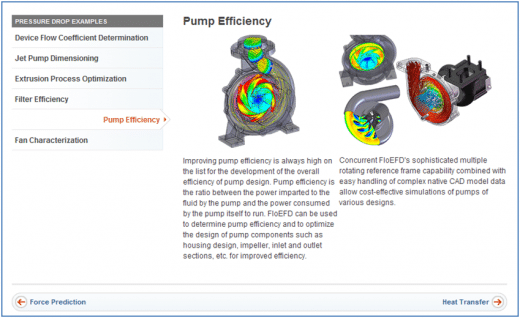In my last post I pointed out a very obvious mistake in Blue Ridge Numerics’ “CFD Comparison Chart” of March 19th this year, which incorrectly stated that FloEFD can only handle incompressible sub-sonic flows.
The reason I highlighted this as the most obvious mistake in the “CFD Comparison Chart” is that FloEFD can trace its history back to the Russian Aerospace Industry in the late 1980s originating from a code called Aeroshape-3D, having been developed by aerospace experts targeting transonic, supersonic and even hypersonic flows. Technical papers on Aeroshape-3D are still available on the internet to this day, as shown by this example published by NASA.
Referring to the “CFD Comparison Chart” shown in my earlier post, another error appears in the Heat Transfer Capabilities section, which states that FloEFD does not have a solar capability, yet there is an example available on our web site at http://www.mentor.com/products/mechanical/fluid-dynamics/heat-transfer.
Yet another error appears in the Motion Capabilities section of the “CFD Comparison Chart” which states that FloEFD can not handle Rotating/Turbomachinery applications. Again, there are examples available on our web site at http://www.mentor.com/products/mechanical/fluid-dynamics/pressure-drop covering pump efficiency prediction and fan characterization:
Next time I’ll let you know what happened when we wrote to Ed Williams, the CEO of Blue Ridge Numerics, to point out some of these particular mistakes and ask that they remove the document from the public domain, but I’m going to round off this post by pointing out just some of the other mistakes.
Starting on the first page, under CAD-driven Process, the “CFD Comparison Chart” claims that FloEFD’s interface, mouse commands and workflow does not mimic CAD systems. This is frankly bizarre! FloEFD is embedded in a range of CAD systems so the user interface, mouse command and workflow ARE those of the CAD system! Indeed, CAD-embedding is what delivers the extraordinary world-leading productivity gains inside FloEFD that make it possible to incorporate analysis into fast-paced product design departments – which we call Concurrent CFD.
In the next sections of the “CFD Comparison Chart” there are a host of incorrect claims about FloEFD’s meshing capabilities and incorrect claims about it’s ability to perform multi-scenario design studies. FloEFD actually exploits the sophisticated design variant or family tree capabilities that are native to a given CAD system, easily rebutting this claim. There’s even a misleading statement about the lack of a PCB Characterizer, yet FloEFD imports 3D MCAD PCB designs through it’s industry-standard IDF import capability. I could go on, but hopefully you’ve got the sense of just how misleading the Blue Ridge Numerics’ “CFD Comparison Chart” is.
Dr. J, Hampton Court






